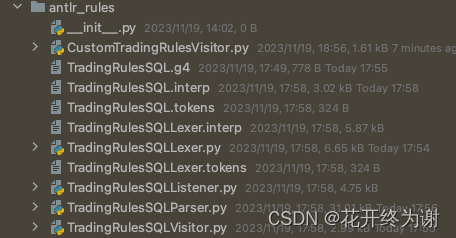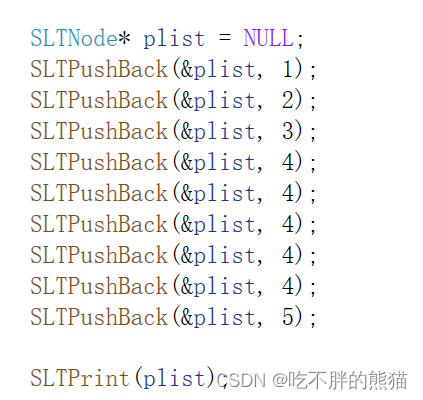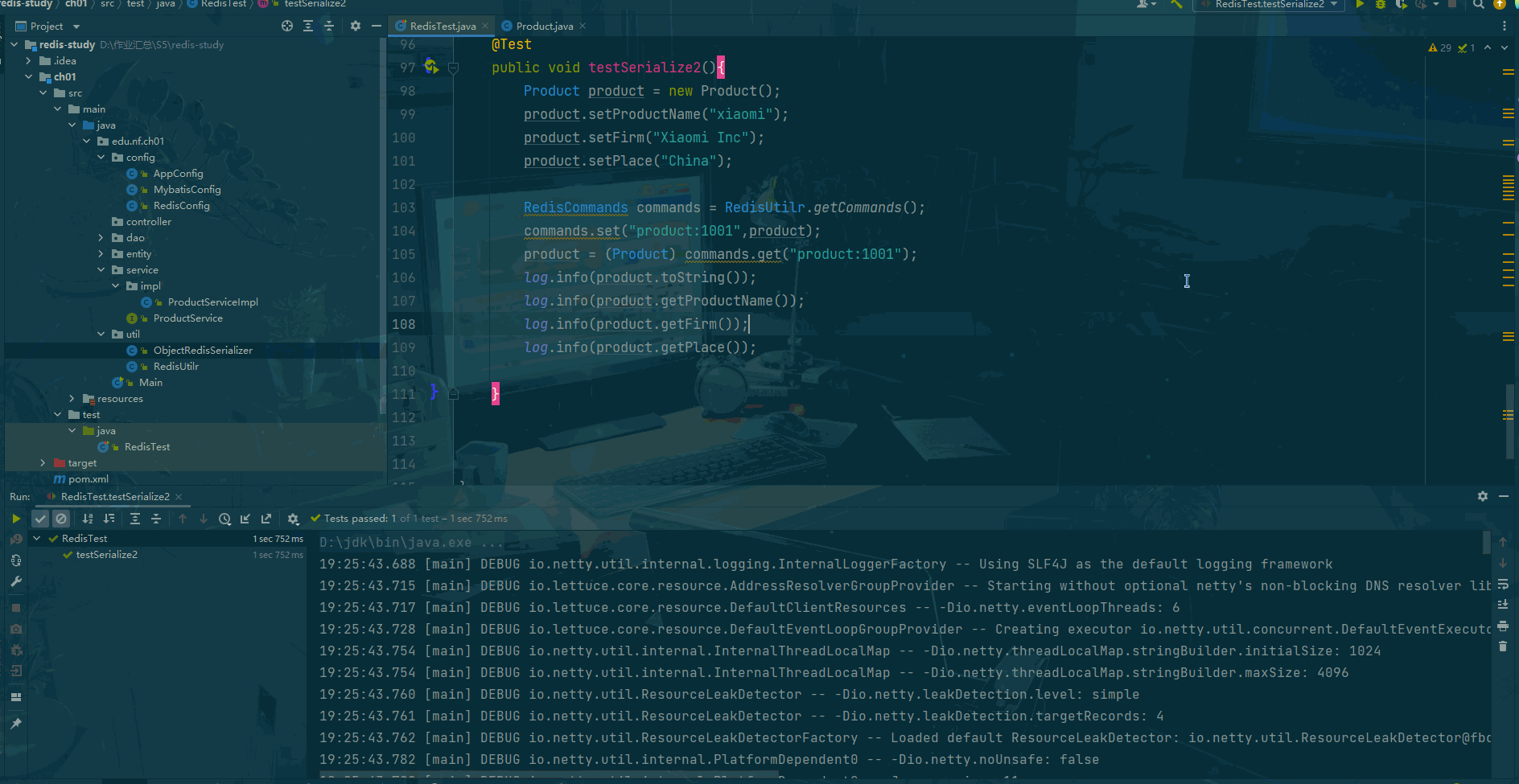在这里主要是分享一个不错的代码,喜欢的可以慢慢研究。我看了一遍,觉得里面有很多有意思的东西,供大家学习和参考。

利用PCA轴总结的70个环境变量,利用biomod2进行生态位建模:
#----------------------------------------------------------#
# NICHE MODELLING WITH BIOMOD2 USING #######
# 70 ENVIRONMENTAL VARIABLES (10-km RESOLUTION) #######
# SUMMARIZED IN PCA AXES #######
#-------------------------------------------------------## Contact: Pedro V. Eisenlohr (pedro.eisenlohr@unemat.br)#------------------------------------------------- Acknowledgments ------------------------------------------------------------####
### Dr. Guarino Colli's team of Universidade de BrasÃlia. #########################################################################
### Dr. Diogo Souza Bezerra Rocha (Instituto de Pesquisas Jardim Botânico/RJ). ####################################################
### Drª Marinez Ferreira de Siqueira (Instituto de Pesquisas Jardim Botânico/RJ). #################################################
### My students of Ecology Lab, mainly J.C. Pires-de-Oliveira. ####################################################################
#----------------------------------------- ---------------------------------------------------------------------------------------##------------------------------------------------------------------------------------------------------------------------------------------------------------------------------------#
### Environmental data source (70 variables):### Temperature and precipitation (19 variables): CHELSA (http://chelsa-climate.org/).#Bio1 = Annual Mean Temperature#Bio2 = Mean Diurnal Range#Bio3 = Isothermality#Bio4 = Temperature Seasonality#Bio5 = Max Temperature of Warmest Month#Bio6 = Min Temperature of Coldest Month#Bio7 = Temperature Annual Range#Bio8 = Mean Temperature of Wettest Quarter#Bio9 = Mean Temperature of Driest Quarter#Bio10 = Mean Temperature of Warmest Quarter#Bio11 = Mean Temperature of Coldest Quarter#Bio12 = Annual Precipitation#Bio13 = Precipitation of Wettest Month#Bio14 = Precipitation of Driest Month#Bio15 = Precipitation Seasonality#Bio16 = Precipitation of Wettest Quarter#Bio17 = Precipitation of Driest Quarter#Bio18 = Precipitation of Warmest Quarter#Bio19 = Precipitation of Coldest Quarter### Solar radiation (3 variables), water vapor pressure (3 variables) and wind speed (3 variables): WorldClim 2.0 (http://worldclim.org/version2).#Solar Radiation: Maximum, Minimum and Mean #Water Vapor Pressure: Maximum, Minimum and Mean#Wind Speed: Maximum, Minimum and Mean### Cloud Cover (3 variables): CRU-TS v3.10.01 Historic Climate Database for GIS (http://www.cgiar-csi.org/data/uea-cru-ts-v3-10-01-historic-climate-database).#Cloud Cover: Maximum, Minimum and Mean### Enhanced Vegetation Index (3 variables): http://www.earthenv.org/.#Coefficient of variation of EVI = Normalized dispersion of EVI#Range of EVI#Standard deviation of EVI### Forest Coverage (1 variable): http://www.fao.org/soils-portal/soil-survey/soil-maps-and-databases/harmonized-world-soil-database-v12/en/.#Forest land, calibrated to FRA2000 land statistics### Grassland/Scrub/Woodland Coverage (1 variable): http://www.fao.org/soils-portal/soil-survey/soil-maps-and-databases/harmonized-world-soil-database-v12/en/.### Water Bodies Coverage (1 variable): http://www.fao.org/soils-portal/soil-survey/soil-maps-and-databases/harmonized-world-soil-database-v12/en/.### Elevation (1 variable): CGIAR-CSI (2006): NASA Shuttle Radar Topographic Mission (SRTM) (http://srtm.csi.cgiar.org/).### Slope (1 variable) and Aspect (1 variable): obtained from Elevation.#Topographic variables obtained by applying 'terrain' function of 'raster' package.### Topographic Wetness Index (1 variable): ENVIREM - ENVIronmental Rasters for Ecological Modeling (http://envirem.github.io/#varTable).### Global Relief Model (1 variable): UNEP - http://geodata.grid.unep.ch/results.php#Global Relief Model of Earth's surface that integrates land topography and ocean bathymetry.### Terrain Roughness Index (1 variable): ENVIREM - ENVIronmental Rasters for Ecological Modeling (http://envirem.github.io/#varTable).### Potential Evapotranspiration - PET (6 variables) and Aridity Index (1 variable): Global Aridity and PET Database (http://www.cgiar-csi.org/data/global-aridity-and-pet-database)
# and ENVIREM - ENVIronmental Rasters for Ecological Modeling (http://envirem.github.io/#varTable).#Annual Potential Evapotranspiration.#Mean Monthly PET of Coldest Quarter.#Mean Monthly PET of Driest Quarter.#PET Seasonality: monthly variability in potential evapotranspiration.#Mean Monthly PET of Warmest Quarter.#Mean Monthly PET of Wettest quarter#Global Annual Aridity Index.### AET (1 variable) and Soil Water Stress (3 variables): Global High-Resolution Soil-Water Balance (http://www.cgiar-csi.org/data/global-high-resolution-soil-water-balance#download).#Mean Annual Actual Evapotranspiration.#Soil Water Stress: Maximum, Minimum and Mean.### Relative Humidity (6 variables): Climond (https://www.climond.org/RawClimateData.aspx).#Relative Humidity at 9 am: Maximum, Minimum and Mean.#Relative Humidity at 3 pm: Maximum, Minimum and Mean.### Soil Variables (10 variables): Soil grids (https://soilgrids.org)#BulkDensity = Bulk density (fine earth) in kg/cubic–meter#Clay = Clay content (0–2 micro meter) mass fraction in %#Coarse = Coarse fragments volumetric in %#Sand = Sand content (50–2000 micro meter) mass fraction in %#Silt = Silt content (2–50 micro meter) mass fraction in %#BDRLOG = Predicted probability of occurrence (0–100%) of R horizon#BDRICM = Depth to bedrock (R horizon) up to 200 cm#CARBON = Soil organic carbon content (fine earth fraction) in g per kg#pH_H20 = Soil pH x 10 in H2O#CEC = Cation exchange capacity of soil in cmolc/kg
#------------------------------------------------------------------------------------------------------------------------------------------------------------------------------------##----------------------------#
## SET WORKING DIRECTORY ####
#--------------------------## Each user should adjust this!
setwd(choose.dir())
getwd()
list.files() # Among the listed files, there must be one called # "Environmental layers" and another called "Shapefiles".#---------------------------------------------#
## INSTALL AND LOAD THE REQUIRED PACKAGES ####
#-------------------------------------------##install.packages("biomod2", dep=T)
#install.packages("colorRamps", dep=T)
#install.packages("dismo", dep=T)
#install.packages("dplyr", dep=T)
#install.packages("maps", dep=T)
#install.packages("maptools", dep=T)
#install.packages("plotKML", dep=T)
#install.packages("raster", dep=T)
#install.packages("rgdal", dep=T)
#install.packages("RStoolbox", dep=T)
#install.packages("foreach", dep=T)
#install.packages("doParallel", dep=T)library(biomod2)
library(colorRamps)
library(dismo)
library(dplyr)
library(maps)
library(maptools)
library(plotKML)
library(raster)
library(rgdal)
library(RStoolbox)
library(foreach)
library(doParallel)
library(virtualspecies)
library(filesstrings)# Creating output folder #if (dir.exists("outputs") == F) {dir.create("outputs")
}# Parallel processing ## cores <- detectCores()/2 # Assigning 50% of the cores for modeling
#getDoParWorkers()
#cl <- parallel::makeCluster(cores, outfile =paste0("./outputs/", "Log.log"))
#registerDoParallel(cl)
#getDoParWorkers()#--------------------------------------------------------------------------------------------#
### IF YOU HAVE ALREADY DOWNLOADED AND TREATED ALL LAYERS, YOU SHOULD SKIP THE STEPS BELOW ####
#------------------------------------------------------------------------------------------##---------------------------------------------------------------------#
# Loading CHELSA layers (Temperature and Precipitation - 1979-2013) ####
#---------------------------------------------------------------------## First, load a 10-km resolution mask to resample:
#bio.wc <- list.files("./Environmental layers/WorldClim 2.0", full.names=TRUE)
#bio.wc <- stack(bio.wc)
#bio.wc
#res(bio.wc)# Crop mask layers
#neotrop <- readOGR("./Shapefiles/ShapeNeo/neotropic.shp")
#bio.wc <- mask(crop(bio.wc,neotrop),neotrop)
#bio.wc
#res(bio.wc)# Resampling CHELSA layers
#bioclim <- list.files("./Environmental layers/CHELSA", full.names=TRUE, pattern=".grd")
#bioclim <- stack(bioclim)
#bioclim <- mask(crop(bioclim,neotrop),neotrop)
#names(bioclim)
#res(bioclim)
#bioclim <-resample(bioclim, bio.wc)
#res(bioclim)
#plot(bioclim[[1]])
#names(bioclim)#bio1<-(bioclim[[1]])
#writeRaster(bio1, "bio01")#bio10<-(bioclim[[2]])
#writeRaster(bio10,"bio10")#bio11<-(bioclim[[3]])
#writeRaster(bio11,"bio11")#bio12<-(bioclim[[4]])
#writeRaster(bio12,"bio12")#bio13<-(bioclim[[5]])
#writeRaster(bio13,"bio13")#bio14<-(bioclim[[6]])
#writeRaster(bio14,"bio14")#bio15<-(bioclim[[7]])
#writeRaster(bio15,"bio15")#bio16<-(bioclim[[8]])
#writeRaster(bio16,"bio16")#bio17<-(bioclim[[9]])
#writeRaster(bio17,"bio17")#bio18<-(bioclim[[10]])
#writeRaster(bio18,"bio18")#bio19<-(bioclim[[11]])
#writeRaster(bio19,"bio19")#bio2<-(bioclim[[12]])
#writeRaster(bio2,"bio2")#bio3<-(bioclim[[13]])
#writeRaster(bio3,"bio3")#bio4<-(bioclim[[14]])
#writeRaster(bio4,"bio4")#bio5<-(bioclim[[15]])
#writeRaster(bio5,"bio5")#bio6<-(bioclim[[16]])
#writeRaster(bio6,"bio6")#bio7<-(bioclim[[17]])
#writeRaster(bio7,"bio7")#bio8<-(bioclim[[18]])
#writeRaster(bio8,"bio8")#bio9<-(bioclim[[19]])
#writeRaster(bio9,"bio9")#----------------------------------------#
#----------------------------------------#
### Compiling other rasters to stack ####
#--------------------------------------##Solar Radiation:
#solar.radiation <- list.files("./Environmental layers/Solar Radiation", pattern=".tif", full.names=TRUE)
#solar.radiation <- stack(solar.radiation)
#solar.radiation.mean <- mean(solar.radiation)
#solar.radiation.max <- max(solar.radiation)
#solar.radiation.min <- min(solar.radiation)
#solar.radiation.mean <- mask(crop(solar.radiation.mean, neotrop),neotrop)
#writeRaster(solar.radiation.mean,"SolarRadiationMean")
#solar.radiation.max <- mask(crop(solar.radiation.max, neotrop),neotrop)
#writeRaster(solar.radiation.max,"SolarRadiationMax")
#solar.radiation.min <- mask(crop(solar.radiation.min, neotrop),neotrop)
#writeRaster(solar.radiation.min,"SolarRadiationMin")
#res(solar.radiation.mean)
#plot(solar.radiation.mean)
#res(solar.radiation.max)
#plot(solar.radiation.max)
#res(solar.radiation.min)
#plot(solar.radiation.min)#Water Vapor Pressure:
#water.vapor.pressure <- list.files("./Environmental layers/Water Vapor Pressure", pattern=".tif", full.names=TRUE)
#water.vapor.pressure <-stack(water.vapor.pressure)
#water.vapor.pressure.mean <-mean(water.vapor.pressure)
#water.vapor.pressure.max <-max(water.vapor.pressure)
#water.vapor.pressure.min <-min(water.vapor.pressure)
#water.vapor.pressure.mean <- mask(crop(water.vapor.pressure.mean, neotrop),neotrop)
#writeRaster(water.vapor.pressure.mean,"WaterVaporPressureMean")
#water.vapor.pressure.max <- mask(crop(water.vapor.pressure.max, neotrop),neotrop)
#writeRaster(water.vapor.pressure.max,"WaterVaporPressureMax")
#water.vapor.pressure.min <- mask(crop(water.vapor.pressure.min, neotrop),neotrop)
#writeRaster(water.vapor.pressure.min,"WaterVaporPressureMin")
#res(water.vapor.pressure.mean)
#plot(water.vapor.pressure.mean)
#res(water.vapor.pressure.max)
#plot(water.vapor.pressure.max)
#res(water.vapor.pressure.min)
#plot(water.vapor.pressure.min)#Wind Speed:
#wind.speed <- list.files("./Environmental layers/Wind Speed", pattern=".tif", full.names=TRUE)
#wind.speed <- stack(wind.speed)
#wind.speed.mean <-mean(wind.speed)
#wind.speed.max <-max(wind.speed)
#wind.speed.min <-min(wind.speed)
#wind.speed.mean <-mask(crop(wind.speed.mean, neotrop),neotrop)
#writeRaster(wind.speed.mean, "WindSpeedMean")
#wind.speed.max <-mask(crop(wind.speed.max, neotrop),neotrop)
#writeRaster(wind.speed.max, "WindSpeedMax")
#wind.speed.min <-mask(crop(wind.speed.min, neotrop),neotrop)
#writeRaster(wind.speed.min, "WindSpeedMin")
#res(wind.speed.mean)
#plot(wind.speed.mean)
#res(wind.speed.max)
#plot(wind.speed.max)
#res(wind.speed.min)
#plot(wind.speed.min)#Cloud Cover:
#cloud.cover<-list.files("./Environmental layers/Cloud Cover",pattern=".asc", full.names=TRUE)
#cloud.cover<-stack(cloud.cover)
#cloud.cover.mean<-mean(cloud.cover)
#cloud.cover.max<-max(cloud.cover)
#cloud.cover.min<-min(cloud.cover)
#cloud.cover.mean<-mask(crop(cloud.cover.mean, neotrop),neotrop)
#cloud.cover.mean<-resample(cloud.cover.mean,bioclim)
#writeRaster(cloud.cover.mean,"CloudCoverMean")
#cloud.cover.max<-mask(crop(cloud.cover.max, neotrop),neotrop)
#cloud.cover.max<-resample(cloud.cover.max,bioclim)
#writeRaster(cloud.cover.max,"CloudCoverMax")
#cloud.cover.min<-mask(crop(cloud.cover.min, neotrop),neotrop)
#cloud.cover.min<-resample(cloud.cover.min,bioclim)
#writeRaster(cloud.cover.min,"CloudCoverMin")
#res(cloud.cover.mean)
#plot(cloud.cover.mean)
#res(cloud.cover.max)
#plot(cloud.cover.max)
#res(cloud.cover.min)
#plot(cloud.cover.min)#Enhanced Vegetation Index - Coeficient of Variation:
#EVI.cv <- list.files("./Environmental layers/Enhanced Vegetation Index_cv",pattern=".tif", full.names=TRUE)
#EVI.cv <- stack(EVI.cv)
#EVI.cv <- mask(crop(EVI.cv,neotrop),neotrop)
#EVI.cv.10km <- resample(EVI.cv,bioclim)
#writeRaster(EVI.cv.10km, "EVIcv10km")
#res(EVI.cv.10km)
#plot(EVI.cv.10km)#Enhanced Vegetation Index - Range:
#EVI.rng <- list.files("./Environmental layers/Enhanced Vegetation Index_range",pattern=".tif", full.names=TRUE)
#EVI.rng <- stack(EVI.rng)
#EVI.rng <- mask(crop(EVI.rng,neotrop),neotrop)
#EVI.rng.10km <- resample(EVI.rng,bioclim)
#writeRaster(EVI.rng.10km, "EVIrng10km")
#res(EVI.rng.10km)
#plot(EVI.rng.10km)#Enhanced Vegetation Index - Standard Deviation:
#EVI.std <- list.files("./Environmental layers/Enhanced Vegetation Index_std",pattern=".tif", full.names=TRUE)
#EVI.std <- stack(EVI.std)
#EVI.std <- mask(crop(EVI.std,neotrop),neotrop)
#EVI.std.10km <- resample(EVI.std,bioclim)
#writeRaster(EVI.std.10km, "EVIstd10km")
#res(EVI.std.10km)
#plot(EVI.std.10km)#Forest Coverage:
#FOR.cov <- list.files("./Environmental layers/Vegetation coverage/Forest Coverage",pattern=".asc", full.names=TRUE)
#FOR.cov <- stack(FOR.cov)
#FOR.cov <- mask(crop(FOR.cov,neotrop),neotrop)
#writeRaster(FOR.cov, "FORcov")
#res(FOR.cov)
#plot(FOR.cov)#Grassland/Scrub/Woodland Coverage:
#GRASS.cov <- list.files("./Environmental layers/Vegetation coverage/Grassland Coverage",pattern=".asc", full.names=TRUE)
#GRASS.cov <- stack(GRASS.cov)
#GRASS.cov <- mask(crop(GRASS.cov,neotrop),neotrop)
#writeRaster(GRASS.cov, "GRASScov")
#res(GRASS.cov)
#plot(GRASS.cov)#Water Bodies:
#WATB.cov <- list.files("./Environmental layers/Vegetation coverage/Water Bodies",pattern=".asc", full.names=TRUE)
#WATB.cov <- stack(WATB.cov)
#WATB.cov <- mask(crop(WATB.cov,neotrop),neotrop)
#writeRaster(WATB.cov, "WATBcov")
#res(WATB.cov)
#plot(WATB.cov)#Elevation:
#elevation <-list.files("./Environmental layers/Elevation",pattern=".asc", full.names=TRUE)
#elevation <-stack(elevation)
#elevation <-mask(crop(elevation, neotrop),neotrop)
#elevation.10km <-resample(elevation,bioclim)
#writeRaster(elevation.10km,"Elevation10km")
#res(elevation.10km)
#plot(elevation.10km)# Global Relief Model:
#relief <- list.files("./Environmental layers/Global Relief Model", pattern="tif", full.names=TRUE)
#relief <- stack(relief)
#relief <- mask(crop(relief,neotrop),neotrop)
#relief.10km <- resample(relief, bioclim)
#writeRaster(relief.10km, "relief10km")
#res(relief.10km)
#plot(relief.10km)#Slope and Aspect:
#slope <- terrain(elevation.10km, opt="slope")
#writeRaster(slope,"Slope")
#res(slope)
#plot(slope)#aspect <- terrain(elevation.10km, opt="aspect")
#writeRaster(aspect,"Aspect")
#res(aspect)
#plot(aspect)#Terrain Roughness Index:
#roughness <-list.files("./Environmental layers/Terrain Roughness Index",pattern=".tif", full.names=TRUE)
#roughness <- stack(roughness)
#roughness <-mask(crop(roughness, neotrop),neotrop)
#roughness.10km <-resample(roughness,bioclim)
#writeRaster(roughness.10km,"Roughness10km")
#res(roughness.10km)
#plot(roughness.10km)#Topographic Wetness Index:
#topowet <-list.files("./Environmental layers/Topographic Wetness Index",pattern=".tif", full.names=TRUE)
#topowet <- stack(topowet)
#topowet <-mask(crop(topowet, neotrop),neotrop)
#topowet.10km <-resample(topowet,bioclim)
#writeRaster(topowet.10km,"TopoWet10km")
#res(topowet.10km)
#plot(topowet.10km)#Potential Evapotranspiration - PET:
### Annual PET:
#PET.1km <- raster("./Environmental layers/Potential Evapotranspiration/Global PET - Annual/PET_he_annual/pet_he_yr/w001001.adf")
#PET.1km <- mask(crop(PET.1km,neotrop),neotrop)
#PET.10km <- resample(PET.1km,bioclim)
#writeRaster(PET.10km, "PET10km")
#res(PET.10km)
#plot(PET.10km)### PET Coldest Quarter:
#PET.cq <- list.files("./Environmental layers/Potential Evapotranspiration/PET Coldest Quarter",pattern=".tif", full.names=TRUE)
#PET.cq <- stack(PET.cq)
#PET.cq <-mask(crop(PET.cq, neotrop),neotrop)
#PET.cq <-resample(PET.cq,bioclim)
#writeRaster(PET.cq,"PETcq")
#res(PET.cq)
#plot(PET.cq)### PET Driest Quarter:
#PET.dq <- list.files("./Environmental layers/Potential Evapotranspiration/PET Driest Quarter",pattern=".tif", full.names=TRUE)
#PET.dq <- stack(PET.dq)
#PET.dq <-mask(crop(PET.dq, neotrop),neotrop)
#PET.dq <-resample(PET.dq,bioclim)
#writeRaster(PET.dq,"PETdq")
#res(PET.dq)
#plot(PET.dq)### PET Warmest Quarter:
#PET.wq <- list.files("./Environmental layers/Potential Evapotranspiration/PET Warmest Quarter",pattern=".tif", full.names=TRUE)
#PET.wq <- stack(PET.wq)
#PET.wq <- mask(crop(PET.wq, neotrop),neotrop)
#PET.wq <- resample(PET.wq,bioclim)
#writeRaster(PET.wq,"PETwq")
#res(PET.wq)
#plot(PET.wq)### PET Wettest Quarter:
#PET.wetq <- list.files("./Environmental layers/Potential Evapotranspiration/PET Wettest Quarter",pattern=".tif", full.names=TRUE)
#PET.wetq <- stack(PET.wetq)
#PET.wetq <- mask(crop(PET.wetq, neotrop),neotrop)
#PET.wetq <- resample(PET.wetq,bioclim)
#writeRaster(PET.wetq,"PETwetq")
#res(PET.wetq)
#plot(PET.wetq)### PET Seasonality:
#PET.seas <- list.files("./Environmental layers/Potential Evapotranspiration/PET Seasonality",pattern=".tif", full.names=TRUE)
#PET.seas <- stack(PET.seas)
#PET.seas <- mask(crop(PET.seas, neotrop),neotrop)
#PET.seas <- resample(PET.seas,bioclim)
#writeRaster(PET.seas,"PETseas")
#res(PET.seas)
#plot(PET.seas)#Aridity Index:
#Aridity.1km <- raster("./Environmental layers/Global Aridity and PET database/Global Aridity - Annual/AI_annual/ai_yr/w001001.adf")
#Aridity.1km <- mask(crop(Aridity.1km,neotrop),neotrop)
#Aridity.10km <- resample(Aridity.1km,bioclim)
#writeRaster(Aridity.10km, "Aridity10km")
#res(Aridity.10km)
#plot(Aridity.10km)#Actual Evapotranspiration:
#AET.1km <- raster("./Environmental layers/Global Soil Water Balance and AET/Mean Annual AET/AET_YR/aet_yr/w001001.adf")
#AET.1km <- mask(crop(AET.1km,neotrop),neotrop)
#AET.10km <- resample(AET.1km,bioclim)
#writeRaster(AET.10km, "AET10km")
#res(AET.10km)
#plot(AET.10km)#Soil Water Stress:
#SWS.jan <-raster("./Environmental layers/Global Soil Water Balance and AET/Monthly Soil Water Stress/swc_fr/swc_fr_1/w001001.adf")
#SWS.feb <-raster("./Environmental layers/Global Soil Water Balance and AET/Monthly Soil Water Stress/swc_fr/swc_fr_2/w001001.adf")
#SWS.mar <-raster("./Environmental layers/Global Soil Water Balance and AET/Monthly Soil Water Stress/swc_fr/swc_fr_3/w001001.adf")
#SWS.apr <-raster("./Environmental layers/Global Soil Water Balance and AET/Monthly Soil Water Stress/swc_fr/swc_fr_4/w001001.adf")
#SWS.may <-raster("./Environmental layers/Global Soil Water Balance and AET/Monthly Soil Water Stress/swc_fr/swc_fr_5/w001001.adf")
#SWS.jun <-raster("./Environmental layers/Global Soil Water Balance and AET/Monthly Soil Water Stress/swc_fr/swc_fr_6/w001001.adf")
#SWS.jul <-raster("./Environmental layers/Global Soil Water Balance and AET/Monthly Soil Water Stress/swc_fr/swc_fr_7/w001001.adf")
#SWS.aug <-raster("./Environmental layers/Global Soil Water Balance and AET/Monthly Soil Water Stress/swc_fr/swc_fr_8/w001001.adf")
#SWS.sep <-raster("./Environmental layers/Global Soil Water Balance and AET/Monthly Soil Water Stress/swc_fr/swc_fr_9/w001001.adf")
#SWS.oct <-raster("./Environmental layers/Global Soil Water Balance and AET/Monthly Soil Water Stress/swc_fr/swc_fr_10/w001001.adf")
#SWS.nov <-raster("./Environmental layers/Global Soil Water Balance and AET/Monthly Soil Water Stress/swc_fr/swc_fr_11/w001001.adf")
#SWS.dec <-raster("./Environmental layers/Global Soil Water Balance and AET/Monthly Soil Water Stress/swc_fr/swc_fr_12/w001001.adf")
#SWS.stack <-stack(SWS.jan,SWS.feb,SWS.mar,SWS.apr,SWS.may,SWS.jun,SWS.jul,
# SWS.aug,SWS.sep,SWS.oct,SWS.nov,SWS.dec)#SWS.mean.1km <-mean(SWS.stack)
#SWS.mean.1km <-mask(crop(SWS.mean.1km,neotrop),neotrop)
#SWS.mean.10km <-resample(SWS.mean.1km, bioclim)
#writeRaster(SWS.mean.10km,"SWSmean10km")
#res(SWS.mean.10km)
#plot(SWS.mean.10km)#SWS.max.1km <-max(SWS.stack)
#SWS.max.1km <-mask(crop(SWS.max.1km,neotrop),neotrop)
#SWS.max.10km <-resample(SWS.max.1km, bioclim)
#writeRaster(SWS.max.10km,"SWSmax10km")
#res(SWS.max.10km)
#plot(SWS.max.10km)#SWS.min.1km <-min(SWS.stack)
#SWS.min.1km <-mask(crop(SWS.min.1km,neotrop),neotrop)
#SWS.min.10km <-resample(SWS.min.1km, bioclim)
#writeRaster(SWS.min.10km,"SWSmin10km")
#res(SWS.min.10km)
#plot(SWS.min.10km)#Relative Humidity at 3pm:
#Humidity.3pm.jan <-raster("./Environmental layers/Relative Humidity at 3 pm/CM10_1975H_Raw_ESRI_RHpm_V1.2/CM10_1975H_Raw_ESRI_RHpm_V1.2/rhpm01/w001001.adf")
#Humidity.3pm.feb <-raster("./Environmental layers/Relative Humidity at 3 pm/CM10_1975H_Raw_ESRI_RHpm_V1.2/CM10_1975H_Raw_ESRI_RHpm_V1.2/rhpm02/w001001.adf")
#Humidity.3pm.mar <-raster("./Environmental layers/Relative Humidity at 3 pm/CM10_1975H_Raw_ESRI_RHpm_V1.2/CM10_1975H_Raw_ESRI_RHpm_V1.2/rhpm03/w001001.adf")
#Humidity.3pm.apr <-raster("./Environmental layers/Relative Humidity at 3 pm/CM10_1975H_Raw_ESRI_RHpm_V1.2/CM10_1975H_Raw_ESRI_RHpm_V1.2/rhpm04/w001001.adf")
#Humidity.3pm.may <-raster("./Environmental layers/Relative Humidity at 3 pm/CM10_1975H_Raw_ESRI_RHpm_V1.2/CM10_1975H_Raw_ESRI_RHpm_V1.2/rhpm05/w001001.adf")
#Humidity.3pm.jun <-raster("./Environmental layers/Relative Humidity at 3 pm/CM10_1975H_Raw_ESRI_RHpm_V1.2/CM10_1975H_Raw_ESRI_RHpm_V1.2/rhpm06/w001001.adf")
#Humidity.3pm.jul <-raster("./Environmental layers/Relative Humidity at 3 pm/CM10_1975H_Raw_ESRI_RHpm_V1.2/CM10_1975H_Raw_ESRI_RHpm_V1.2/rhpm07/w001001.adf")
#Humidity.3pm.aug <-raster("./Environmental layers/Relative Humidity at 3 pm/CM10_1975H_Raw_ESRI_RHpm_V1.2/CM10_1975H_Raw_ESRI_RHpm_V1.2/rhpm08/w001001.adf")
#Humidity.3pm.sep <-raster("./Environmental layers/Relative Humidity at 3 pm/CM10_1975H_Raw_ESRI_RHpm_V1.2/CM10_1975H_Raw_ESRI_RHpm_V1.2/rhpm09/w001001.adf")
#Humidity.3pm.oct <-raster("./Environmental layers/Relative Humidity at 3 pm/CM10_1975H_Raw_ESRI_RHpm_V1.2/CM10_1975H_Raw_ESRI_RHpm_V1.2/rhpm10/w001001.adf")
#Humidity.3pm.nov <-raster("./Environmental layers/Relative Humidity at 3 pm/CM10_1975H_Raw_ESRI_RHpm_V1.2/CM10_1975H_Raw_ESRI_RHpm_V1.2/rhpm11/w001001.adf")
#Humidity.3pm.dec <-raster("./Environmental layers/Relative Humidity at 3 pm/CM10_1975H_Raw_ESRI_RHpm_V1.2/CM10_1975H_Raw_ESRI_RHpm_V1.2/rhpm12/w001001.adf")
#Humidity.3pm.stack <-stack(Humidity.3pm.jan, Humidity.3pm.feb, Humidity.3pm.mar, Humidity.3pm.apr, Humidity.3pm.may, Humidity.3pm.jun, Humidity.3pm.jul,
# Humidity.3pm.aug, Humidity.3pm.sep, Humidity.3pm.oct, Humidity.3pm.nov, Humidity.3pm.dec)#Humidity.3pm.mean.20km <-mean(Humidity.3pm.stack)
#Humidity.3pm.mean.20km <-mask(crop(Humidity.3pm.mean.20km,neotrop),neotrop)
#Humidity.3pm.mean.10km <-resample(Humidity.3pm.mean.20km, bioclim)
#writeRaster(Humidity.3pm.mean.10km,"Humidity3pmMean10km")
#res(Humidity.3pm.mean.10km)
#plot(Humidity.3pm.mean.10km)#Humidity.3pm.max.20km <-max(Humidity.3pm.stack)
#Humidity.3pm.max.20km <-mask(crop(Humidity.3pm.max.20km,neotrop),neotrop)
#Humidity.3pm.max.10km <-resample(Humidity.3pm.max.20km, bioclim)
#writeRaster(Humidity.3pm.max.10km,"Humidity3pmMax10km")
#res(Humidity.3pm.max.10km)
#plot(Humidity.3pm.max.10km)#Humidity.3pm.min.20km <-min(Humidity.3pm.stack)
#Humidity.3pm.min.20km <-mask(crop(Humidity.3pm.min.20km,neotrop),neotrop)
#Humidity.3pm.min.10km <-resample(Humidity.3pm.min.20km, bioclim)
#writeRaster(Humidity.3pm.min.10km,"Humidity3pmMin10km")
#res(Humidity.3pm.min.10km)
#plot(Humidity.3pm.min.10km)#Relative Humidity at 9am:
#Humidity.9am.jan <-raster("./Environmental layers/Relative Humidity at 9 am/CM10_1975H_Raw_ESRI_RHam_V1.2/CM10_1975H_Raw_ESRI_RHam_V1.2/rham01/w001001.adf")
#Humidity.9am.feb <-raster("./Environmental layers/Relative Humidity at 9 am/CM10_1975H_Raw_ESRI_RHam_V1.2/CM10_1975H_Raw_ESRI_RHam_V1.2/rham02/w001001.adf")
#Humidity.9am.mar <-raster("./Environmental layers/Relative Humidity at 9 am/CM10_1975H_Raw_ESRI_RHam_V1.2/CM10_1975H_Raw_ESRI_RHam_V1.2/rham03/w001001.adf")
#Humidity.9am.apr <-raster("./Environmental layers/Relative Humidity at 9 am/CM10_1975H_Raw_ESRI_RHam_V1.2/CM10_1975H_Raw_ESRI_RHam_V1.2/rham04/w001001.adf")
#Humidity.9am.may <-raster("./Environmental layers/Relative Humidity at 9 am/CM10_1975H_Raw_ESRI_RHam_V1.2/CM10_1975H_Raw_ESRI_RHam_V1.2/rham05/w001001.adf")
#Humidity.9am.jun <-raster("./Environmental layers/Relative Humidity at 9 am/CM10_1975H_Raw_ESRI_RHam_V1.2/CM10_1975H_Raw_ESRI_RHam_V1.2/rham06/w001001.adf")
#Humidity.9am.jul <-raster("./Environmental layers/Relative Humidity at 9 am/CM10_1975H_Raw_ESRI_RHam_V1.2/CM10_1975H_Raw_ESRI_RHam_V1.2/rham07/w001001.adf")
#Humidity.9am.aug <-raster("./Environmental layers/Relative Humidity at 9 am/CM10_1975H_Raw_ESRI_RHam_V1.2/CM10_1975H_Raw_ESRI_RHam_V1.2/rham08/w001001.adf")
#Humidity.9am.sep <-raster("./Environmental layers/Relative Humidity at 9 am/CM10_1975H_Raw_ESRI_RHam_V1.2/CM10_1975H_Raw_ESRI_RHam_V1.2/rham09/w001001.adf")
#Humidity.9am.oct <-raster("./Environmental layers/Relative Humidity at 9 am/CM10_1975H_Raw_ESRI_RHam_V1.2/CM10_1975H_Raw_ESRI_RHam_V1.2/rham10/w001001.adf")
#Humidity.9am.nov <-raster("./Environmental layers/Relative Humidity at 9 am/CM10_1975H_Raw_ESRI_RHam_V1.2/CM10_1975H_Raw_ESRI_RHam_V1.2/rham11/w001001.adf")
#Humidity.9am.dec <-raster("./Environmental layers/Relative Humidity at 9 am/CM10_1975H_Raw_ESRI_RHam_V1.2/CM10_1975H_Raw_ESRI_RHam_V1.2/rham12/w001001.adf")
#Humidity.9am.stack <-stack(Humidity.9am.jan, Humidity.9am.feb, Humidity.9am.mar, Humidity.9am.apr, Humidity.9am.may, Humidity.9am.jun, Humidity.9am.jul,
# Humidity.9am.aug, Humidity.9am.sep, Humidity.9am.oct, Humidity.9am.nov, Humidity.9am.dec)#Humidity.9am.mean.20km <-mean(Humidity.9am.stack)
#Humidity.9am.mean.20km <-mask(crop(Humidity.9am.mean.20km,neotrop),neotrop)
#Humidity.9am.mean.10km <-resample(Humidity.9am.mean.20km, bioclim)
#writeRaster(Humidity.9am.mean.10km,"Humidity9amMean10km")
#res(Humidity.9am.mean.10km)
#plot(Humidity.9am.mean.10km)#Humidity.9am.max.20km <-max(Humidity.9am.stack)
#Humidity.9am.max.20km <-mask(crop(Humidity.9am.max.20km,neotrop),neotrop)
#Humidity.9am.max.10km <-resample(Humidity.9am.max.20km, bioclim)
#writeRaster(Humidity.9am.max.10km,"Humidity9amMax10km")
#res(Humidity.9am.max.10km)
#plot(Humidity.9am.max.10km)#Humidity.9am.min.20km <-min(Humidity.9am.stack)
#Humidity.9am.min.20km <-mask(crop(Humidity.9am.min.20km,neotrop),neotrop)
#Humidity.9am.min.10km <-resample(Humidity.9am.min.20km, bioclim)
#writeRaster(Humidity.9am.min.10km,"Humidity9amMin10km")
#res(Humidity.9am.min.10km)
#plot(Humidity.9am.min.10km)### Soil Grids:
# Bulk Density
#BulkDensity.0 <- raster("./Environmental layers/Soil Grids/Bulk Density/BLDFIE_M_sl1_250m.tif")
#BulkDensity.5 <- raster("./Environmental layers/Soil Grids/Bulk Density/BLDFIE_M_sl2_250m.tif")
#BulkDensity.15 <- raster("./Environmental layers/Soil Grids/Bulk Density/BLDFIE_M_sl3_250m.tif")
#BulkDensity.30 <- raster("./Environmental layers/Soil Grids/Bulk Density/BLDFIE_M_sl4_250m.tif")
#BulkDensity <- stack(BulkDensity.0, BulkDensity.5, BulkDensity.15, BulkDensity.30)
#BulkDensity <- mean(BulkDensity)
#BulkDensity <- mask(crop(BulkDensity,neotrop),neotrop)
#BulkDensity <- resample(BulkDensity,bioclim)
#writeRaster(BulkDensity, "BulkDensity.grd")
#res(BulkDensity)# Clay Content
#Clay.0 <- raster("./Environmental layers/Soil Grids/Clay Content/CLYPPT_M_sl1_250m.tif")
#Clay.5 <- raster("./Environmental layers/Soil Grids/Clay Content/CLYPPT_M_sl2_250m.tif")
#Clay.15 <- raster("./Environmental layers/Soil Grids/Clay Content/CLYPPT_M_sl3_250m.tif")
#Clay.30 <- raster("./Environmental layers/Soil Grids/Clay Content/CLYPPT_M_sl4_250m.tif")
#Clay <- stack(Clay.0,Clay.5,Clay.15,Clay.30)
#Clay <- mean(Clay)
#Clay <- mask(crop(Clay,neotrop),neotrop)
#Clay <- resample(Clay, bioclim)
#writeRaster(Clay, "Clay.grd")
#res(Clay)# Coarse Fragments
#Coarse.0 <- raster("./Environmental layers/Soil Grids/Coarse Fragments/CRFVOL_M_sl1_250m.tif")
#Coarse.5 <- raster("./Environmental layers/Soil Grids/Coarse Fragments/CRFVOL_M_sl2_250m.tif")
#Coarse.15 <- raster("./Environmental layers/Soil Grids/Coarse Fragments/CRFVOL_M_sl3_250m.tif")
#Coarse.30 <- raster("./Environmental layers/Soil Grids/Coarse Fragments/CRFVOL_M_sl4_250m.tif")
#Coarse <- stack(Coarse.0,Coarse.5,Coarse.15,Coarse.30)
#Coarse <- mean(Coarse)
#Coarse <- mask(crop(Coarse,neotrop),neotrop)
#Coarse <- resample(Coarse, bioclim)
#writeRaster(Coarse, "Coarse.grd")
#res(Coarse)# Sand Content
#Sand.0 <- raster("./Environmental layers/Soil Grids/Sand Content/SNDPPT_M_sl1_250m.tif")
#Sand.5 <- raster("./Environmental layers/Soil Grids/Sand Content/SNDPPT_M_sl2_250m.tif")
#Sand.15 <- raster("./Environmental layers/Soil Grids/Sand Content/SNDPPT_M_sl3_250m.tif")
#Sand.30 <- raster("./Environmental layers/Soil Grids/Sand Content/SNDPPT_M_sl4_250m.tif")
#Sand <- stack(Sand.0,Sand.5,Sand.15,Sand.30)
#Sand <- mean(Sand)
#Sand <- mask(crop(Sand,neotrop),neotrop)
#Sand <- resample(Sand, bioclim)
#writeRaster(Sand, "Sand.grd")
#res(Sand)# Silt Content
#Silt.0 <- raster("./Environmental layers/Soil Grids/Silt Content/SLTPPT_M_sl1_250m.tif")
#Silt.5 <- raster("./Environmental layers/Soil Grids/Silt Content/SLTPPT_M_sl2_250m.tif")
#Silt.15 <- raster("./Environmental layers/Soil Grids/Silt Content/SLTPPT_M_sl3_250m.tif")
#Silt.30 <- raster("./Environmental layers/Soil Grids/Silt Content/SLTPPT_M_sl4_250m.tif")
#Silt <- stack(Silt.0,Silt.5,Silt.15,Silt.30)
#Silt <- mean(Silt)
#Silt <- mask(crop(Silt,neotrop),neotrop)
#Silt <- resample(Silt, bioclim)
#writeRaster(Silt, "Silt.grd")
#res(Silt)# Predicted Probability of Occurrence of R horizon
#BDRLOG <- raster("./Environmental layers/Soil Grids/BDRLOG/BDRLOG_M_250m.tif")
#BDRLOG <- stack(BDRLOG)
#BDRLOG <- mask(crop(BDRLOG,neotrop),neotrop)
#BDRLOG <- resample(BDRLOG, bioclim)
#writeRaster(BDRLOG, "BDRLOG.grd")
#res(BDRLOG)# Depth to bedrock up to 200m
#BDRICM <- raster("./Environmental layers/Soil Grids/Depth to Bedrock/BDRICM_M_250m.tif")
#BDRICM <- stack(BDRICM)
#BDRICM <- mask(crop(BDRICM,neotrop),neotrop)
#BDRICM <- resample(BDRICM, bioclim)
#writeRaster(BDRICM, "BDRICM.grd")
#res(BDRICM)# Soil organic carbon stock
#CARBON.0 <- raster("./Environmental layers/Soil Grids/Carbon stock/OCSTHA_M_sd1_250m.tif")
#CARBON.5 <- raster("./Environmental layers/Soil Grids/Carbon stock/OCSTHA_M_sd2_250m.tif")
#CARBON.15 <- raster("./Environmental layers/Soil Grids/Carbon stock/OCSTHA_M_sd3_250m.tif")
#CARBON.30 <- raster("./Environmental layers/Soil Grids/Carbon stock/OCSTHA_M_sd4_250m.tif")
#CARBON <- stack(CARBON.0, CARBON.5, CARBON.15, CARBON.30)
#CARBON <- mean (CARBON)
#CARBON <- mask(crop(CARBON,neotrop),neotrop)
#CARBON <- resample(CARBON, bioclim)
#writeRaster(CARBON, "CARBON.grd")
#res(CARBON)# pH in H20
#pH_w.0 <- raster("./Environmental layers/Soil Grids/PHIHOX/PHIHOX_M_sl1_250m.tif")
#pH_w.5 <- raster("./Environmental layers/Soil Grids/PHIHOX/PHIHOX_M_sl2_250m.tif")
#pH_w.15 <- raster("./Environmental layers/Soil Grids/PHIHOX/PHIHOX_M_sl3_250m.tif")
#pH_w.30 <- raster("./Environmental layers/Soil Grids/PHIHOX/PHIHOX_M_sl4_250m.tif")
#pH_w <- stack(pH_w.0,pH_w.5,pH_w.15,pH_w.30)
#pH_w <- mean (pH_w)
#pH_w <- mask(crop(pH_w,neotrop),neotrop)
#pH_w <- resample(pH_w, bioclim)
#writeRaster(pH_w, "pH_w.grd")
#res(pH_w)# pH in KCl
#pH_k.0 <- raster("./Environmental layers/Soil Grids/PHIKCL/PHIKCL_M_sl1_250m.tif")
#pH_k.5 <- raster("./Environmental layers/Soil Grids/PHIKCL/PHIKCL_M_sl2_250m.tif")
#pH_k.15 <- raster("./Environmental layers/Soil Grids/PHIKCL/PHIKCL_M_sl3_250m.tif")
#pH_k.30 <- raster("./Environmental layers/Soil Grids/PHIKCL/PHIKCL_M_sl4_250m.tif")
#pH_k <- stack(pH_k.0,pH_k.5,pH_k.15,pH_k.30)
#pH_k <- mean (pH_k)
#pH_k <- mask(crop(pH_k,neotrop),neotrop)
#pH_k <- resample(pH_k, bioclim)
#writeRaster(pH_k, "pH_k.grd", overwrite=TRUE)
#res(pH_k)#ORCDRC
#ORCDRC.0 <- raster("./Environmental layers/Soil Grids/ORCDRC/ORCDRC_M_sl1_250m.tif")
#ORCDRC.5 <- raster("./Environmental layers/Soil Grids/ORCDRC/ORCDRC_M_sl2_250m.tif")
#ORCDRC.15 <- raster("./Environmental layers/Soil Grids/ORCDRC/ORCDRC_M_sl3_250m.tif")
#ORCDRC.30 <- raster("./Environmental layers/Soil Grids/ORCDRC/ORCDRC_M_sl4_250m.tif")
#ORC <- stack(ORCDRC.0,ORCDRC.5,ORCDRC.15,ORCDRC.30)
#ORC <- mean (ORC)
#ORC <- mask(crop(ORC,neotrop),neotrop)
#ORC <- resample(ORC, bioclim)
#writeRaster(ORC, "ORC.grd")
#res(ORC)# CEC
#CEC.0 <- raster("./Environmental layers/Soil Grids/CECSOL/CECSOL_M_sl1_250m.tif")
#CEC.5 <- raster("./Environmental layers/Soil Grids/CECSOL/CECSOL_M_sl2_250m.tif")
#CEC.15 <- raster("./Environmental layers/Soil Grids/CECSOL/CECSOL_M_sl3_250m.tif")
#CEC.30 <- raster("./Environmental layers/Soil Grids/CECSOL/CECSOL_M_sl4_250m.tif")
#CEC <- stack(CEC.0,CEC.5,CEC.15,CEC.30)
#CEC <- mean (CEC)
#CEC <- mask(crop(CEC,neotrop),neotrop)
#CEC <- resample(CEC, bioclim)
#writeRaster(CEC, "CEC.grd")
#res(CEC)#--------------------------------------------------------------------------------------------#
### IF YOU HAVE ALREADY DOWNLOAD AND TREATED ALL LAYERS, YOU SHOULD CONTINUE FROM HERE ######
#------------------------------------------------------------------------------------------##-----------------------------------#
# Loading environmental layers #####
#-----------------------------------#bioclim <- list.files("./Environmental layers/CHELSA", pattern="grd", full.names=TRUE)
bioclim <- stack(bioclim)
solar.radiation.mean <-raster("./Environmental layers/Solar Radiation/SolarRadiationMean.grd")
names(solar.radiation.mean) = "Solar Rad_Mean"
solar.radiation.max <-raster("./Environmental layers/Solar Radiation/SolarRadiationMax.grd")
names(solar.radiation.max) = "Solar Rad_Max"
solar.radiation.min <-raster("./Environmental layers/Solar Radiation/SolarRadiationMin.grd")
names(solar.radiation.min) = "Solar Rad_Min"
water.vapor.pressure.mean<-raster("./Environmental layers/Water Vapor Pressure/WaterVaporPressureMean.grd")
names(water.vapor.pressure.mean) = "Water Vapor Press_Mean"
water.vapor.pressure.max <-raster("./Environmental layers/Water Vapor Pressure/WaterVaporPressureMax.grd")
names(water.vapor.pressure.max) = "Water Vapor Press_Max"
water.vapor.pressure.min <-raster("./Environmental layers/Water Vapor Pressure/WaterVaporPressureMin.grd")
names(water.vapor.pressure.min) = "Water Vapor Press_Min"
wind.speed.mean <-raster("./Environmental layers/Wind Speed/WindSpeedMean.grd")
names(wind.speed.mean) = "Wind Speed_Mean"
wind.speed.max <-raster("./Environmental layers/Wind Speed/WindSpeedMax.grd")
names(wind.speed.max) = "Wind Speed_Max"
wind.speed.min <-raster("./Environmental layers/Wind Speed/WindSpeedMin.grd")
names(wind.speed.min) = "Wind Speed_Min"
cloud.cover.mean <-raster("./Environmental layers/Cloud Cover/CloudCoverMean.grd")
names(cloud.cover.mean) = "Cloud Cover_Mean"
cloud.cover.max <- raster("./Environmental layers/Cloud Cover/CloudCoverMax.grd")
names(cloud.cover.max) = "Cloud Cover_Max"
cloud.cover.min <- raster("./Environmental layers/Cloud Cover/CloudCoverMin.grd")
names(cloud.cover.min) = "Cloud Cover_Min"
EVI.cv.10km <- raster("./Environmental layers/Enhanced Vegetation Index_cv/EVIcv10km.grd")
names(EVI.cv.10km) = "EVI_cv"
EVI.rng.10km <- raster("./Environmental layers/Enhanced Vegetation Index_rng/EVIrng10km.grd")
names(EVI.rng.10km) = "EVI_rng"
EVI.std.10km <- raster("./Environmental layers/Enhanced Vegetation Index_std/EVIstd10km.grd")
names(EVI.std.10km) = "EVI_std"
FOR.cov <- raster("./Environmental layers/Vegetation coverage/Forest coverage/FORcov.grd")
names(FOR.cov) = "FOREST_cov"
GRASS.cov <- raster("./Environmental layers/Vegetation coverage/Grassland coverage/GRASScov.grd")
names(GRASS.cov) = "GRASS_cov"
WATB.cov <- raster("./Environmental layers/Vegetation coverage/Water Bodies/WATBcov.grd")
names(WATB.cov) = "WATBODIES_cov"
elevation.10km <- raster("./Environmental layers/Elevation/Elevation10km.grd")
names(elevation.10km) = "Elevation"
slope <-raster("./Environmental layers/Slope/Slope.grd")
names(slope) = "Slope"
aspect <-raster("./Environmental layers/Aspect/Aspect.grd")
names(aspect) = "Aspect"
roughness.10km <- raster("./Environmental layers/Terrain Roughness Index/Roughness10km.grd")
names(roughness.10km) = "Roughness"
topowet.10km <- raster("./Environmental layers/Topographic Wetness Index/TopoWet10km.grd")
names(topowet.10km) = "TopoWet"
PET.10km <- raster("./Environmental layers/Potential Evapotranspiration/Global PET - Annual/PET10km.grd")
names(PET.10km) = "Annual PET"
PET.cq <- raster("./Environmental layers/Potential Evapotranspiration/PET Coldest Quarter/PETcq.grd")
names(PET.cq) = "PET_ColdQuart"
PET.dq <- raster("./Environmental layers/Potential Evapotranspiration/PET Driest Quarter/PETdq.grd")
names(PET.dq) = "PET_DriQuart"
PET.wq <- raster("./Environmental layers/Potential Evapotranspiration/PET Warmest Quarter/PETwq.grd")
names(PET.wq) = "PET_WarmQuart"
PET.wetq <-raster("./Environmental layers/Potential Evapotranspiration/PET Wettest Quarter/PETwetq.grd")
names(PET.wetq) = "PET_WetQuart"
PET.seas <-raster("./Environmental layers/Potential Evapotranspiration/PET Seasonality/PETseas.grd")
names(PET.seas) = "PET_Seas"
Aridity.10km <-raster("./Environmental layers/Global Aridity/Global Aridity - Annual/Aridity10km")
names(Aridity.10km) = "Aridity"
AET.10km <-raster("./Environmental layers/Actual Evapotranspiration/Mean Annual AET/AET10km.grd")
names(AET.10km) = "AET"
SWS.mean.10km <-raster("./Environmental layers/Soil Water Stress/Monthly Soil Water Stress/SWSmean10km.grd")
names(SWS.mean.10km) = "SWS_mean"
SWS.max.10km <-raster("./Environmental layers/Soil Water Stress/Monthly Soil Water Stress/SWSmax10km.grd")
names(SWS.max.10km) = "SWS_max"
SWS.min.10km <-raster("./Environmental layers/Soil Water Stress/Monthly Soil Water Stress/SWSmin10km.grd")
names(SWS.min.10km) = "SWS_min"
relief.10km <-raster("./Environmental layers/Global Relief Model/relief10km.grd")
names(relief.10km) = "Relief"
Humidity.3pm.mean.10km <-raster("./Environmental layers/Relative Humidity 3pm/Humidity3pmMean10km.grd")
names(Humidity.3pm.mean.10km) = "Humidity3pm_mean"
Humidity.3pm.min.10km <-raster("./Environmental layers/Relative Humidity 3pm/Humidity3pmMin10km.grd")
names(Humidity.3pm.min.10km) = "Humidity3pm_min"
Humidity.3pm.max.10km <-raster("./Environmental layers/Relative Humidity 3pm/Humidity3pmMax10km.grd")
names(Humidity.3pm.max.10km) = "Humidity3pm_max"
Humidity.9am.mean.10km <-raster("./Environmental layers/Relative Humidity 9am/Humidity9amMean10km.grd")
names(Humidity.9am.mean.10km) = "Humidity9am_mean"
Humidity.9am.max.10km <-raster("./Environmental layers/Relative Humidity 9am/Humidity9amMax10km.grd")
names(Humidity.9am.max.10km) = "Humidity9am_max"
Humidity.9am.min.10km <-raster("./Environmental layers/Relative Humidity 9am/Humidity9amMin10km.grd")
names(Humidity.9am.min.10km) = "Humidity9am_min"
BulkDensity <- raster("./Environmental layers/Soil Grids/Bulk Density/BulkDensity.grd")
names(BulkDensity) = "BulkDensity"
Clay <- raster("./Environmental layers/Soil Grids/Clay Content/Clay.grd")
names(Clay) = "Clay"
Coarse <- raster("./Environmental layers/Soil Grids/Coarse Fragments/Coarse.grd")
names(Coarse) = "Coarse"
Sand <- raster("./Environmental layers/Soil Grids/Sand Content/Sand.grd")
names(Sand) = "Sand"
Silt <- raster("./Environmental layers/Soil Grids/Silt Content/Silt.grd")
names(Silt) = "Silt"
BDRLOG <- raster("./Environmental layers/Soil Grids/BDRLOG/BDRLOG.grd")
names(BDRLOG) = "BDRLOG"
BDRICM <- raster("./Environmental layers/Soil Grids/Depth to Bedrock/BDRICM.grd")
names(BDRICM) = "BDRICM"
CARBON <- raster("./Environmental layers/Soil Grids/Carbon stock/CARBON.grd")
names(CARBON) = "CARBON"
pH_H20 <- raster("./Environmental layers/Soil Grids/PHIHOX/pH_w.grd")
names(pH_H20) = "pH_H20"
CEC <- raster("./Environmental layers/Soil Grids/CECSOL/CEC.grd")
names(CEC) = "CEC"#------------------------------------------------------------------------#
############### Stacking all environmental layers #######################
#----------------------------------------------------------------------## If you wish to use the layers from WorldClim 2.0 instead of the layers
# from CHELSA, you should replace bioclim by bio.wc below.bio.crop <- stack(bioclim, solar.radiation.mean, solar.radiation.max, solar.radiation.min, water.vapor.pressure.mean, water.vapor.pressure.max, water.vapor.pressure.min, wind.speed.mean, wind.speed.max, wind.speed.min, cloud.cover.mean, cloud.cover.max, cloud.cover.min,EVI.cv.10km, EVI.rng.10km, EVI.std.10km, FOR.cov, GRASS.cov, WATB.cov,elevation.10km, relief.10km, slope, aspect, roughness.10km, topowet.10km,PET.10km, PET.cq, PET.dq, PET.wq, PET.wetq, PET.seas, Aridity.10km, AET.10km,SWS.mean.10km, SWS.min.10km, SWS.max.10km,Humidity.3pm.mean.10km, Humidity.3pm.min.10km, Humidity.3pm.max.10km, Humidity.9am.mean.10km, Humidity.9am.max.10km, Humidity.9am.min.10km,BulkDensity, Clay, Coarse, Sand, Silt, BDRLOG, BDRICM, CARBON, pH_H20,CEC)
bio.crop
res(bio.crop) ##0.083 = aprox. 10km#----------------------------------------------------------------#
##################### PCA #######################################
#--------------------------------------------------------------#
#install.packages("FactoMineR")
#library(FactoMineR)
#bio.crop.df<-as.data.frame(bio.crop)
#PCA<-PCA(bio.crop.df)memory.limit(1000000)
env.selected1 <- rasterPCA(bio.crop, nComp=13,scores = TRUE, cor=TRUE, spca = TRUE, bylayer=TRUE, filename="PCA.grd", overwrite=TRUE)
# Here I selected the first 13 components because they account for more than 90%
# of the total variance considering the 70 predictors of this routine for the
# entire Neotropical Region (10-km resolution).
#env.selected1$model$loadings
#write.table(env.selected1$model$loadings, 'cont.csv', sep = ',')
summary(env.selected1$model) #to verify the explanation of each PCA component
env.selected <-stack(env.selected1$map)
env.selected
res(env.selected)
plot(env.selected)
names(env.selected) #---------------------------------------#
### Loading species occurrence data ####
#-------------------------------------##The species matrix should be exactly as demonstrated below:#sp lon lat
#Genera.species1 -000.00 -000.00
#Genera.species1 -000.00 -000.00
#Genera.species1 -000.00 -000.00#Don't forget the '.' between genera and species' epithet
#The same name for the same species
#negative coordinates for South Hemisphere
#positive coordinates for North Hemispherespp<-read.table(file.choose(),header=T,sep=",")
dim(spp)
View(spp)#If you would like to obtain values of the 70 environmental predictors
#for each of your occurrence records:
spp1<-spp[,-1]
View(spp1)
ext<-extract(bio.crop,spp1)
ext<-cbind(spp,ext)
View(ext)
write.table(ext,"Variables for each site.csv")# Visualizing species occurrence records on a map #
data(wrld_simpl)
plot(wrld_simpl, xlim=c(-85, -35), ylim=c(-55, 15), col="lightgray", axes=TRUE)
points(spp$lon, spp$lat, col="black", bg="red", pch=21, cex=1.0, lwd=1.0)# Formating occurences data
table(spp$sp) #The second code (after '$') needs to match the code entered in the matrix sppespecies <- unique(spp$sp) #ditto
especies# Creating objects for models calibration
models1<-c("CTA","RF", "GBM")
models2<-c("MAXENT.Phillips", "GLM", "GAM", "MARS","ANN", "FDA")
n.runs = 2 # number of RUNs (use at least 10)
n.algo1 = length(models1)# number of algorithms
n.algo2 = length(models2) #numero de algorithms
n.conj.pa2 = 2 # set of pseudo-absences (use at least 10)
env.selected = bio.crop
especie = especies[1] # To model without a loop, remove the '#' of this line and add it to the 'for', 'foreach' and '.packages'
#-------------------------#
#beginning of the loop####
#-----------------------#
# for(especie in especies[1:length(especies)]){
# foreach(especie = especies, # For parallel looping (Multiple Species)
# .packages = c("raster", "biomod2", 'sp', "sdmvspecies", "filesstrings")) %dopar% {
# ini1 = Sys.time()
# criando tabela para uma especie
occs <- spp[spp$sp == especie, c("lon", "lat")]# nome = strsplit(as.vector(especie), " ")
# especie = paste(nome[[1]][1], nome[[1]][2], sep = ".")# Selecionado pontos espacialmente únicos #
mask <- env.selected[[1]]
{(cell <-cellFromXY(mask, occs[, 1:2])) # get the cell number for each point(x<-(cbind(occs[, 1:2], cell)))#dup <- duplicated(cbind(occs[, 1:2], cell))(dup2 <- duplicated(cbind(cell)))xv<-data.frame(x,dup2)xv[xv=="TRUE"]<-NA(xv<-na.omit(xv))xv<-xv[,1:2]occs =xv # select the records that are not duplicated
}
occs #pontos espacialmente únicos
dim(occs)#-----------------------------------------------#
# GENERATING OTHER REQUIRED OBJECTS FOR SDM ####
#---------------------------------------------## Convert dataset to SpatialPointsDataFrame (only presences)
myRespXY <-occs[, c("lon", "lat")] #Caso dê algum erro aqui, veja como você intitulou as colunas da sua matriz.
# Creating occurrence data object
occurrence.resp <- rep(1, length(myRespXY$lon))#------------------------------------------#
# FIT SPECIES DISTRIBUTION MODELS - SDMS ####
#----------------------------------------#try({ coord1 = occssp::coordinates(coord1) <- ~ lon + latraster::crs(coord1) <- raster::crs(env.selected)dist.mean <- mean(sp::spDists(x = coord1,longlat = T,segments = FALSE))dist.min = 5dist.min <- min(sp::spDists(x = coord1,longlat = T,segments = F))dist.min = 5write.table(c(dist.min, dist.mean),paste0('./outputs/', especie,"_", ".csv"),row.names = F,sep = ",")
})
dim(occs)
PA.number <- length(occs[, 1])
PA.number #número de pontos de ocorrência espacialmente únicosdiretorio = paste0("Occurrence.", especie)##### FORMATING DATA ###### Preparando para CTA, GBM e RF:
sppBiomodData.PA.equal <- BIOMOD_FormatingData(resp.var = occurrence.resp,expl.var = env.selected,resp.xy = myRespXY,resp.name = diretorio,PA.nb.rep = n.conj.pa2, #numero de datasets de pseudoausenciasPA.nb.absences = PA.number, #= numero de pseudoausencias = numero de pontos espacialmente unicosPA.strategy = "disk",# PA.sre.quant = 0.10,PA.dist.min = dist.min * 1000,PA.dist.max = dist.mean * 1000,na.rm = TRUE
)
sppBiomodData.PA.equal#Preparando para os demais algoritmos:
sppBiomodData.PA.10000 <- BIOMOD_FormatingData(resp.var = occurrence.resp,expl.var = env.selected,resp.xy = myRespXY,resp.name = diretorio,PA.nb.rep = n.conj.pa2,PA.nb.absences = 1000,PA.strategy = "disk",# PA.sre.quant = 0.10,PA.dist.min = dist.min * 1000,PA.dist.max = dist.mean * 1000,na.rm = TRUE
)
sppBiomodData.PA.10000#Alocar o Maxent no diretorio correto (certifique-se que o java esteja instalado e atualizado)
#MaxEnt .jar
jar <- paste0(system.file(package = "dismo"), "/java/maxent.jar")
if (file.exists(jar) != T) {url = "http://biodiversityinformatics.amnh.org/open_source/maxent/maxent.php?op=download"download.file(url, dest = "maxent.zip", mode = "wb")unzip("maxent.zip",files = "maxent.jar",exdir = system.file("java", package = "dismo"))unlink("maxent.zip")warning("Maxent foi colocado no diret?rio")
}
system.file("java", package = "dismo")myBiomodOption <-BIOMOD_ModelingOptions(MAXENT.Phillips = list(path_to_maxent.jar = jar))# save.image()
#---------------#
# Modeling ####
#-------------## Com partição treino x teste:
sppModelOut.PA.equal <- BIOMOD_Modeling(sppBiomodData.PA.equal,models =models1,models.options = NULL,NbRunEval = n.runs, #número de repeticoes para cada algoritmoDataSplit = 70,#percentagem de pts para treino.Prevalence = 0.5,VarImport = 0,#caso queira avaliar a importancia das variaveis, mudar para 10 ou 100 permutacoesmodels.eval.meth = c("TSS", "ROC"),SaveObj = TRUE,rescal.all.models = TRUE,do.full.models = FALSE,modeling.id = "spp_presente"
)
# import.var.equal<-data.frame(sppModelOut.PA.equal@variables.importances@val)
# names(import.var.equal)<-rep(c('GBM','CTA','RF'),n.runs + n.conj.pa2)
# import.var.equal
# write.table(import.var.equal,
# paste0("./outputs/", especie, "_", "Var.import.PA.equal.csv"), sep = ',')sppModelOut.PA.10000 <- BIOMOD_Modeling(sppBiomodData.PA.10000,models = models2,models.options = myBiomodOption,NbRunEval = n.runs, #número de repetições para cada algoritmoDataSplit = 70, #percentagem de pts para treino.Prevalence = 0.5,VarImport = 0, #caso queira avaliar a importancia das variaveis, mudar para 10 ou 100 permutacoesmodels.eval.meth = c("TSS", "ROC"),SaveObj = TRUE,rescal.all.models = TRUE,do.full.models = FALSE,modeling.id = "spp_presente"
)# import.var.1000<-data.frame(sppModelOut.PA.10000@variables.importances@val)
# names(import.var.1000)<-rep(c("MAXENT.Phillips", "GLM", "GAM", "ANN", "FDA", "MARS"),n.runs + n.conj.pa2)
# import.var.1000
# write.table(import.var.1000,
# paste0("./outputs/", especie, "_", "Var.import.PA.1000.csv"), sep = ',')#---------------------------------#
# EVALUATE MODELS USING BIOMOD2 ##
#-------------------------------## Sobre as metricas avaliativas,
# ver http://www.cawcr.gov.au/projects/verification/#Methods_for_dichotomous_forecasts##### Evaluation of Models ####
sppModelEval.PA.equal <-get_evaluations(sppModelOut.PA.equal)#GBM, CTA e RF
sppModelEval.PA.equal
write.table(sppModelEval.PA.equal,paste0("./outputs/", especie, "_", "EvaluationsAll_1.csv")
)sppModelEval.PA.10000 <-get_evaluations(sppModelOut.PA.10000) #Os demais.
sppModelEval.PA.10000
write.table(sppModelEval.PA.10000,paste0("./outputs/", especie, "_", "EvaluationsAll_2.csv")
)# Sumarizando as métricas avaliativas
sdm.models1 <-models1
sdm.models1
eval.methods1 <- c("TSS", "ROC") #2 evaluation methods
eval.methods1##### Eval.1 ####means.i1 <- numeric(0)
for (i in 1:n.algo1) {m1 <-sppModelEval.PA.equal[paste(eval.methods1[1]), "Testing.data", paste(sdm.models1[i]), ,]means.i1 = c(means.i1, m1)
}summary.eval.equal <-data.frame(rep(sdm.models1, each = n.runs*n.conj.pa2),rep(1:n.conj.pa2, each = n.runs),rep(1:n.runs, n.algo1),means.i1)
names(summary.eval.equal) <- c("Model", "PA","Run", "TSS")
summary.eval.equal
write.table(summary.eval.equal,paste0("./outputs/", especie, "_", "Models1_Evaluation.csv")
)#----------------------------------------------------------------------------------------#
means.i1 <- numeric(0)
for (i in 1:n.algo1) {m1 <-sppModelEval.PA.equal[paste(eval.methods1[2]), "Sensitivity", paste(sdm.models1[i]), ,]means.i1 = c(means.i1, m1)
}summary.eval.equal.1 <-data.frame(means.i1)
summary.eval.equal.1
(test1<-cbind(summary.eval.equal,summary.eval.equal.1))
names(test1)<-c("Model", "PA","Run","TSS","Se")
test1
#----------------------------------------------------------------------------------------#means.i1.1 <- numeric(0)
means.j1.1 <- numeric(2)
for (i in 1:n.algo1){for (j in 1:2){means.j1.1[j] <- mean(sppModelEval.PA.equal[paste(eval.methods1[j]),"Testing.data",paste(sdm.models1[i]),,])}means.i1.1 <- c(means.i1.1, means.j1.1)
}summary.eval.equal.mean <- data.frame(rep(sdm.models1,each=j), rep(eval.methods1,i), means.i1.1)
names(summary.eval.equal.mean) <- c("Model", "Method", "Mean")
summary.eval.equal.mean
write.table(summary.eval.equal.mean,paste0("./outputs/", especie, "_", "Models1_Evaluation_Mean.csv"))sd.i1 <- numeric(0)
sd.j1 <- numeric(2)
for (i in 1:n.algo1) {for (j in 1:2) {sd.j1[j] <-sd(sppModelEval.PA.equal[paste(eval.methods1[j]), "Testing.data", paste(sdm.models1[i]), ,])}sd.i1 <- c(sd.i1, sd.j1)
}summary.eval.equal.sd <-data.frame(rep(sdm.models1, each = 2), rep(eval.methods1, n.algo1), sd.i1)
names(summary.eval.equal.sd) <- c("Model", "Method", "SD")
summary.eval.equal.sd
write.table(summary.eval.equal.sd,paste0("./outputs/", especie, "_", "Models1_Evaluation_SD.csv")
)sdm.models2 <-models2 #7 models
sdm.models2
eval.methods2 <- c("TSS", "ROC") #2 evaluation methods
eval.methods2##### Eval.2 ####means.i2 <- numeric(0)
for (i2 in 1:n.algo2) {m2 <-sppModelEval.PA.10000[paste(eval.methods2[1]), "Testing.data", paste(sdm.models2[i2]), ,]means.i2 = c(means.i2, m2)
}summary.eval.10000 <-data.frame(rep(sdm.models2, each = n.runs*n.conj.pa2),rep(1:n.conj.pa2, each = n.runs),rep(1:n.runs, n.algo2),means.i2)
names(summary.eval.10000) <- c("Model", "PA","Run", "TSS")
summary.eval.10000
write.table(summary.eval.10000,paste0("./outputs/", especie, "_", "Models2_Evaluation.csv")
)#----------------------------------------------------------------------------------------#
means.i21 <- numeric(0)
for (i21 in 1:n.algo2) {m21 <-sppModelEval.PA.10000[paste(eval.methods2[2]), "Sensitivity", paste(sdm.models2[i21]), ,]means.i21 = c(means.i21, m21)
}summary.eval.10000.1 <-data.frame(means.i21)
summary.eval.10000.1
(test2<-cbind(summary.eval.10000,summary.eval.10000.1))
names(test2)<-c("Model", "PA","Run","TSS","Se")
test2
#----------------------------------------------------------------------------------------#means.i2.2 <- numeric(0)
means.j2.2 <- numeric(2)
for (i in 1:n.algo2){for (j in 1:2){means.j2.2[j] <- mean(sppModelEval.PA.10000[paste(eval.methods2[j]),"Testing.data",paste(sdm.models2[i]),,], na.rm = T)}means.i2.2 <- c(means.i2.2, means.j2.2)
}summary.eval.10000.mean <- data.frame(rep(sdm.models2,each=j), rep(eval.methods2,i), means.i2.2)
names(summary.eval.10000.mean) <- c("Model", "Method", "Mean")
summary.eval.10000.mean
write.table(summary.eval.10000.mean,paste0("./outputs/", especie, "_", "Models2_Evaluation_Mean.csv"))sd.i2 <- numeric(0)
sd.j2 <- numeric(2)
for (i in 1:n.algo2) {for (j in 1:2) {sd.j2[j] <-sd(sppModelEval.PA.10000[paste(eval.methods2[j]), "Testing.data", paste(sdm.models2[i]), ,])}sd.i2 <- c(sd.i2, sd.j2)
}summary.eval.10000.sd <-data.frame(rep(sdm.models2, each = 2), rep(eval.methods2, n.algo2), sd.i2)
names(summary.eval.10000.sd) <- c("Model", "Method", "SD")
summary.eval.10000.sd
write.table(summary.eval.10000.sd,paste0("./outputs/", especie, "_", "Models2_Evaluation_SD.csv")
)#-----------------------------#
# BUILDING OF PROJECTIONS ####
#---------------------------#spp.projections_1 <- BIOMOD_Projection(modeling.output = sppModelOut.PA.equal,new.env = env.selected,proj.name = "Cur1_presente",selected.models = "all",#binary.meth = "ROC",output.format = ".grd"
)spp.projections_2 <- BIOMOD_Projection(modeling.output = sppModelOut.PA.10000,new.env = env.selected,proj.name = "Cur2_presente",selected.models = "all",#binary.meth = "ROC",output.format = ".grd"
)# save.image()
### Definir diretório onde está o arquivo proj_Cur1_presente_Occurrence.grd
projections_1 <-stack(paste0("./",diretorio,"/proj_Cur1_presente/proj_Cur1_presente_Occurrence.",especie,".grd"))
names(projections_1)
summary.eval.equal_1<-test1
x1<-length(na.omit(summary.eval.equal_1$TSS))
summary.eval.equal_1 <-na.omit(summary.eval.equal_1)
summary.eval.equal_1 = summary.eval.equal_1[order(summary.eval.equal_1$Run),]
summary.eval.equal_1 = summary.eval.equal_1[order(summary.eval.equal_1$PA),]summary.eval.equal_1$ID = 1:x1sel = summary.eval.equal_1[summary.eval.equal_1[, "TSS"] > 0.400,]
sel <- na.omit(sel)projections.1 = (subset(projections_1, sel[, "ID"]))
proj.select1 <- names(projections.1)
### Definir diretório onde está o arquivo proj_Cur2_presente_Occurrence.grd
projections_2 <-stack(paste0("./",diretorio,"/proj_Cur2_presente/proj_Cur2_presente_Occurrence.",especie,".grd"))
names(projections_2)
summary.eval.10000_1<-test2
x2<-length(na.omit(summary.eval.10000_1$TSS))
summary.eval.10000_1 <-na.omit(summary.eval.10000_1)
summary.eval.10000_1 = summary.eval.10000_1[order(summary.eval.10000_1$Run),]
summary.eval.10000_1 = summary.eval.10000_1[order(summary.eval.10000_1$PA),]
summary.eval.10000_1$ID = 1:x2sel2 = summary.eval.10000_1[summary.eval.10000_1[, "TSS"] > 0.400,]
sel2 <- na.omit(sel2)projections.2 = (subset(projections_2, sel2[, "ID"]))
proj.select2 <- names(projections.2)
#-----------------------------------------------#
# Mean of the models by algorithm (Present) ####
#---------------------------------------------#
projections.all1 <- stack(projections.1)projections.all2 <- stack(projections.2)#--------------------------------#
# Ensemble - Current Climate ####
#------------------------------#
all.pres<-stack(projections.1, projections.2)# RegressionRG<-c("GLM", "GAM", "FDA", "MARS")
fam.reg<-stack()
for (l in 1:length(RG)) {fam.reg<- stack(fam.reg, subset(all.pres, grep(RG[l], names(all.pres))))
}
fam.reg
fam.reg.m<-mean(fam.reg)
writeRaster(fam.reg.m,filename = paste0("./outputs/", especie, "_", "Regression - Current Climate.tif"),format = "GTiff",overwrite = TRUE
)# Machine LearningMC<-c("MAXENT.Phillips", "RF", "ANN","GBM", "CTA")
fam.mac<-stack()
for (l in 1:length(MC)) {fam.mac<- stack(fam.mac, subset(all.pres, grep(MC[l], names(all.pres))))
}
fam.mac
fam.mac.m<-(mean(fam.mac))
writeRaster(fam.mac.m,filename = paste0("./outputs/", especie, "_", "Machine - Current Climate.tif"),format = "GTiff",overwrite = TRUE
)# All# try({
projections.all.mean <-mean(fam.reg.m,fam.mac.m) / 1000writeRaster(projections.all.mean,filename = paste0("./outputs/", especie, "_", "Ensemble - Current Climate.tif"),format = "GTiff",overwrite = TRUE
)
# })#--------------------------#
# Scores ROC Threshold ####
#------------------------#scores_ROC_equal<-subset(sel, select = c(Model, Se))
scores_ROC_equal[scores_ROC_equal=='-Inf']<-NA
scores_ROC_equal[scores_ROC_equal=='Inf']<-NA
scores_ROC_equal<-na.omit(scores_ROC_equal)
write.table(scores_ROC_equal, paste0("./outputs/",especie, "_", "scores_equal_.csv"))## Evaluation Scores of the Projections with PA.10000
scores_ROC_10000<-subset(sel2, select = c(Model, Se))
scores_ROC_10000[scores_ROC_10000=='-Inf']<-NA
scores_ROC_10000[scores_ROC_10000=='Inf']<-NA
scores_ROC_10000<-na.omit(scores_ROC_10000)
write.table(scores_ROC_10000, paste0("./outputs/",especie, "_", "scores_10000_.csv"))#Scores mean
t<-rbind(scores_ROC_equal, scores_ROC_10000)
(score.1<-mean(sel$Se))
(score.2<-mean(sel2$Se))
(score.all<-(mean(cbind(score.1,score.2)/100)))
# write.table(th_mean, paste0("./outputs/",especie, "_", "scores_mean.csv"))
# Regression
fam.reg.d<-NULL
for (l in 1:length(RG)) {fam.reg.d<- rbind(fam.reg.d, subset(t, Model== RG[l], select = c(Model, Se)))
}
fam.reg.d.m<-mean(fam.reg.d$Se)# Machine Learning
fam.mac.d<-NULL
for (l in 1:length(MC)) {fam.mac.d<- rbind(fam.mac.d, subset(t, Model== MC[l], select = c(Model, Se)))
}
fam.mac.d.m<-mean(fam.mac.d$Se)# score mean
(s.m<-mean(fam.reg.d.m,fam.mac.d.m)/100)
#-------------------------------------------------------#
# Binary models by each algorithm (Current Climate) ####
#-----------------------------------------------------#
{th<- function(x,y){if("RasterLayer" %in% class(x)){ v<-as.data.frame(x, h=T,xy=F)v[v=='0']<-NAv.l<-na.omit(v)(vlen<-length(v.l))n<-raster::ncell(x)(PR<-vlen/n) # PR}else{ cat("x need be raste layer object")}if("numeric" %in% class(y)){(Se<-y) #Sencitivity 0 to 1(VDl <- Se-PR)}else stop( # VDIcat("y need be numeric object"))PA <- convertToPA(x,PA.method = "probability",prob.method = "logistic",beta = VDl,alpha = -0.05,plot = T)
}
}#---------------------#
# Ensenble Binary ####
#-------------------#Convert.p<-th(projections.all.mean,s.m)
projections.binary.all <- Convert.p$pa.raster
writeRaster(projections.binary.all,filename = paste0("./outputs/", especie, "_","Ensemble Binary - Current Climate.tif"),format = "GTiff",overwrite = TRUE
) #--------------------# # Move the files #####------------------# #install.packages("filesstrings")results<-list.files("./outputs/",paste0(especie, "_"),full.names = TRUE)file.move((list.files("./outputs/",paste0(especie, "_"),full.names = TRUE)), (paste0("./outputs/", especie)), overwrite = TRUE)#--------------------# # Time Computing #####------------------# sink("./outputs/tempo.txt", append = T)print(especie)print(Sys.time() - ini1)sink()}
#END











